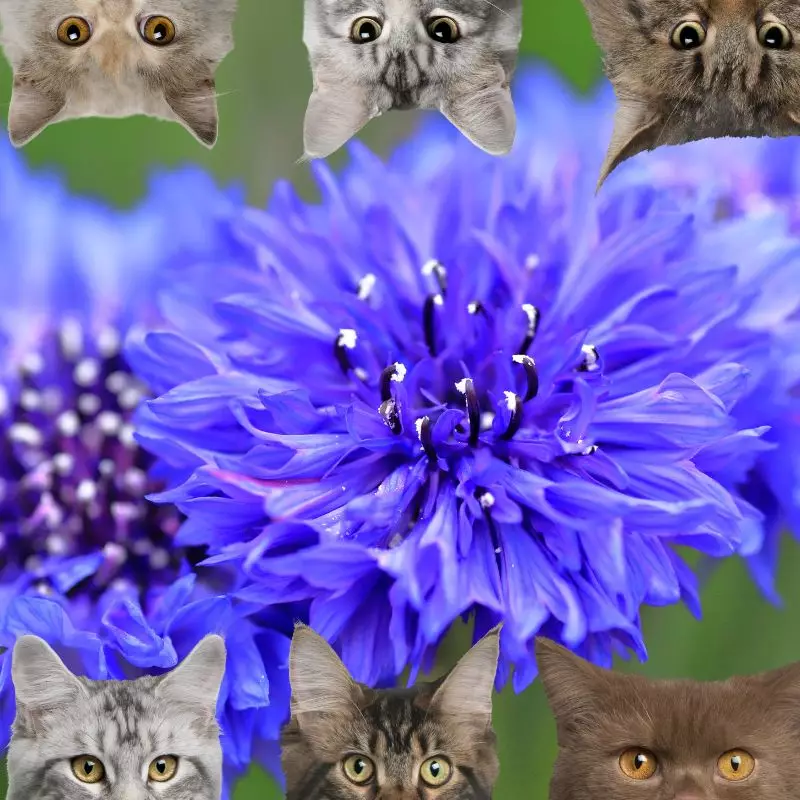Bachelor’s Buttons, alternatively recognized as cornflower or bluebottle, are non-toxic to cats. This conclusion is substantiated by the American Society for the Prevention of Cruelty to Animals (ASPCA), which also lists Bachelor’s Buttons as harmless for dogs and horses.
To ensure the precision and currency of our information, this article has been compiled in collaboration with a cadre of seasoned Doctors of Veterinary Medicine (DVMs). Their insights have been instrumental in elaborating on the potential risks associated with Bachelor’s Buttons, and by extension, various other plants, in relation to cats. Moreover, we have conducted extensive research consulting high-authority websites such as ASPCA and PetMD to corroborate every piece of information pertaining to each plant discussed. By synthesizing expert advice and reputable resources, we strive to furnish our readers with the most accurate and up-to-date information on the implications of various plants on cat health.
Can Cats Eat Bachelor’s Buttons?

Consumption of bachelor’s buttons is generally safe for your feline companions. However, it is better to be on the safe side and not let your cat overindulge in bachelor’s buttons.
Cats may experience gastrointestinal issues if they overeat plant materials. This is because they are natural carnivores and lack the enzymes that can digest plant matter.
Gardeners’ regular use of commercial fertilizers and pesticides to boost plant development may include harmful compounds that might hurt your cats. If these dangerous substances are present in the bachelor’s button or cornflower that your cat ate, he or she may develop poisoning symptoms.
What Are Bachelor’s Buttons?

Scientifically known as centaurea cyanus, bachelor’s button, is an annual flowering plant native to Europe in the Asteraceae family. It is also commonly called cornflower or bluebottle.
This annual plant has grey-green branching branches that grow 40 to 90 cm tall. Their leaves are lanceolate and range in length from one to four centimeters. The blooms are usually a bright blue color and grouped in flowerheads, with a ring of a few large, spreading ray florets encircling a core cluster of disc florets.
Bachelor’s button petals are frequently used in teas and other drinks.
It is very popular as an ornamental plant. There are variants with petals that are blue, white, purple, pink, or even black.
Centaurea cyanus gets its blue color from protocyanin, an anthocyanin component that is also present in roses. Various anthocyanins obtained from Centaurea cyanus are utilized as natural additions in foods such as yogurt.
Keeping Cats Away From Bachelor’s Buttons

Even if your plants at home are not non-toxic, keep them away from your cats. You can safeguard your plants while also ensuring that your cat does not ingest any dangerous particles.
Cats are discouraged from exploring plants by certain scents, textures, and sounds. Experts propose covering the plant and soil with aluminum foil to deter cats who like digging.
If your cat scratches the plant’s pot, covering it with double-sided sticky tape will do the trick. Cats despise the sticky feel of these surfaces on their paws.
Plants to Avoid For Your Cats
If you are a cat owner and unsure if the plants growing in your yard are harmful to your cats, check out this list of toxic plants for cats. You can also check our list of non-toxic plants for cats.





